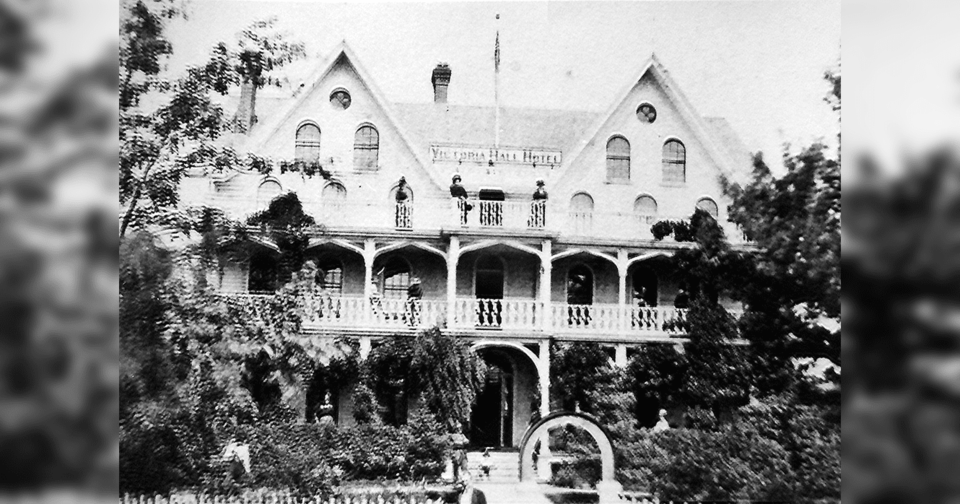Names have a fascination for most of us. We wonder how they originated and if there could be much older names behind them. The Township of Pelham was once Township No. 10 in the Electoral District of Nassau, Province of Quebec. That was before the Constitutional Act was passed by the British Parliament in 1791, dividing the Province of Quebec into Upper and Lower Canada. The first parliament in the new Upper Canada met at Niagara on September 17, 1792, under the first Lieutenant-Governor Colonel John Graves Simcoe. The name Pelham was given to Township No. 10 by Colonel Simcoe, who chose many of the names in the Niagara District.
Eber (Ebor) Rice had purchased Lot 2, Concession 8, in 1821 and built Rice’s Inn or Tavern about where Canboro Road and Haist Street meet now. It was in this building that the earliest Pelham Township Council meetings were held. The area took on the name Riceville, and a post office was opened there on April 6, 1836, with the name Pelham.
Fonthill was called Osborne’s Corners for a short time after Jacob Osborne built the Temperance House (Hotel) at the corner of Pelham Street and Highway 20. In 1841 the Pelham post office was moved down the hill to the village, which some called Temperanceville.
In a letter to his brother in England in 1843, Henry Giles suggested the name Fonthill because, “There is a large temperance hotel at the top of the hill to which they are about to conduct a stream of water and construct a fountain.”
However, the name Temperanceville lingered. In 1852, Dexter D’Everardo registered a “Plan of Temperanceville” under the name Font Hill.
Fenwick was originally Diffin’s Corners, since two brothers, Benjamin and George Diffin, had built two inns near the corner of Canboro Road and Church Street. In 1853, a post office opened while Dr. John Frazer was the Reeve. As he had come to Canada from Fenwick in Scotland, it is most likely that he suggested the new name Fenwick.
Ridgeville’s previous name was Steele’s Corners. Jonas Steele operated a large mercantile business in the village. The name Ridgeville was given official status on August 1, 1865, perhaps because of the high hill to the north.
At one time Effingham was called Beckett’s Mills. Samuel Beckett built the first sawmill in Pelham Township in 1794, a year after he arrived in the area. George Redpath, the storekeeper and first postmaster, decided to call the place after Effingham in England, from which he had emigrated. The post office, which opened on September 1, 1867, bore that name.
North Pelham was formerly Cook’s Corners due to C.J. Cook, who ran a general store in the community. Two other businesses become prominent— the North Pelham Fruit Evaporator, and the North Pelham Cheese Factory. The name they selected was the name given to the post office, which was opened in 1853, with Adam McGlashan as the first postmaster.
Pelham Union is situated at the meeting place of four townships: Clinton, Louth, Gainsborough and Pelham. A school, built in 1852 at the junction of the Twenty Road and Regional Road 24, served the children of the four areas for many years.
Chantler’s name honoured Elwood Chantler, whose 200-acre farm on Lot 8, Concessions 12 and 13, was known as a “model farm.” When the Toronto, Hamilton and Buffalo Railway was built in 1895, a strikingly beautiful station was built on the Chantler property. Chantler remained a postal village from 1898 to 1940. Chantler Road is all that remains now of the past glories.
The name Sanderson’s Corners, like Riceville, has disappeared from the present scene. It was the area around where Sixteen Road and Effingham now meet, a busy corner years ago. One of the first stores in Pelham Township was operated there by Moses Brady. The Sanderson family settled nearby and gave their name to the community, now just memory.
Our old township names are part of our cultural heritage. They tell us something about the locality of which they are the name, and of the people who first settled our community, memories to keep and share with future generations. ♦



